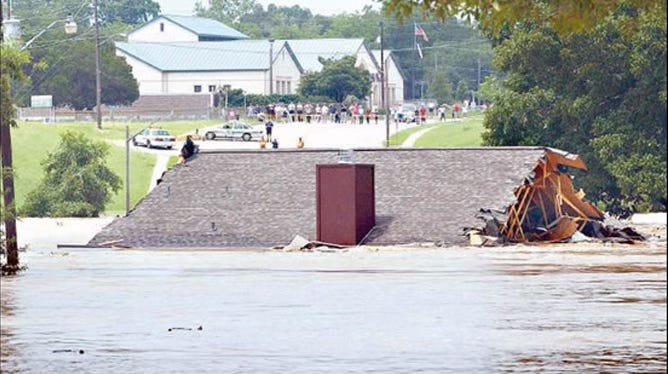How Bureaucratic Delays Left Kerr County Exposed to Flood Disaster
Grant Rejections, Unspent Funds, and How Kerr County’s Failure to Install Flood Sirens Left Residents Vulnerable to Sudden Catastrophe
When torrential rains hit Kerr County, Texas, in July 2025, flash floods swept through with little warning. Residents were left scrambling for safety—many with just 15 minutes, or less, to react. The devastation reignited an old debate: why, after years of public discussion and repeated risk assessments, did Kerr County still lack an emergency flood warning system?
A review of public records and meeting minutes shows a trail of missed opportunities, failed grant applications, and unrealized promises spanning nearly a decade—culminating in a disaster that many believe could have been mitigated.
A Decade of Unheeded Warnings
2016–2018: Recognizing the Risk, Seeking State Support
Kerr County’s flood risk is no secret. The county sits in Texas’ “Flash Flood Alley”—an area geologically and meteorologically primed for sudden, dangerous flooding. In a 2016 commissioner’s meeting, officials openly acknowledged that the county’s warning system was “pretty antiquated” and “marginal at best.” One commissioner called Kerr County “probably the highest risk area in the state for flooding” (CNN).
By 2018, the county had applied for a grant from the Texas Department of Emergency Management (TDEM)—a key source for local disaster preparedness funding. The application sought state support to install a county-wide flood warning system, but the grant was not approved (Kerr County Commissioners Court Minutes, 2018). Meeting records reflect the county’s disappointment and the ongoing effort to find alternative funding sources at the state level.
2021: Money on the Table—But No Action
The topic resurfaced in 2021. Meeting minutes show that a county commissioner identified $50,000 in potential funding for sirens and related infrastructure (Kerr County Minutes, 2021). An engineer detailed options for a warning system using these funds, and commissioners discussed the urgency given repeated flooding events.
But the minutes show no evidence that this money was actually allocated or that the project was put out for bids. According to County Judge Rob Kelly, “We do not have a warning system,” confirming at a press conference in July 2025 that nothing had been implemented (CNN).
Officials have not offered a clear explanation for the breakdown. Interviews and public records suggest several issues:
Competing budget priorities often delayed final approval.
Some county leaders questioned whether sirens would justify the investment in sparsely populated areas.
Staff turnover and shifting leadership led to a loss of momentum.
How a Siren System Could Have Made the Difference
During the July 2025 floods, many Kerr County residents had less than 15 minutes from the time official warnings were issued to the moment floodwaters struck. Cell phones, often the first line of emergency notification, can fail due to power outages, overwhelmed networks, or residents sleeping through alerts.
A countywide siren system would have filled this gap:
Outdoor Warning: Sirens are designed to reach people outdoors or in vehicles—especially critical in rural areas where radio and cellphone signals can be spotty.
Audible Wake-Up: Sirens can wake sleeping residents who might otherwise miss digital alerts.
Rapid Activation: Emergency management can trigger sirens instantly, broadcasting alerts even if cellular systems are down or internet is unavailable.
Layered Protection: Used alongside cellphone alerts, radio, and social media, sirens create a redundant warning system that dramatically increases the chances that people will receive and heed the warning in time (National Weather Service: Flood Safety).
In a 15-minute window, every second counts. Residents woken by sirens—even at night—would have had crucial extra minutes to seek higher ground or evacuate. Local reporting confirms that in other Texas counties with siren systems, lives were saved by early activation during the same flood event (Kerrville Daily Times).
Public Outcry and Renewed Demands
In the wake of disaster, Kerr County residents have started a petition demanding immediate installation of a countywide warning system (Change.org Petition). Many see this as a preventable tragedy—one that exposed the consequences of bureaucratic drift and underinvestment in public safety.
Kerr County’s experience is a stark lesson in the cost of inaction. Despite recognizing the dangers, identifying risks, applying for grants, and even “finding” funds, local leaders never pulled the trigger on a system that might have saved lives. As flooding grows more frequent and severe, the county’s failure underscores a national pattern: disaster prevention often falls victim to budget politics—until it’s too late.




